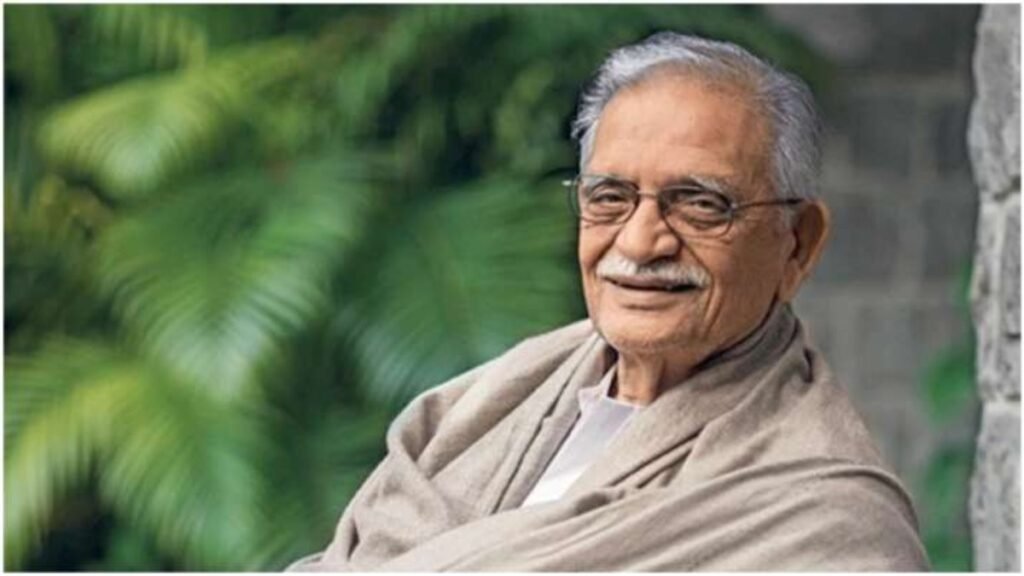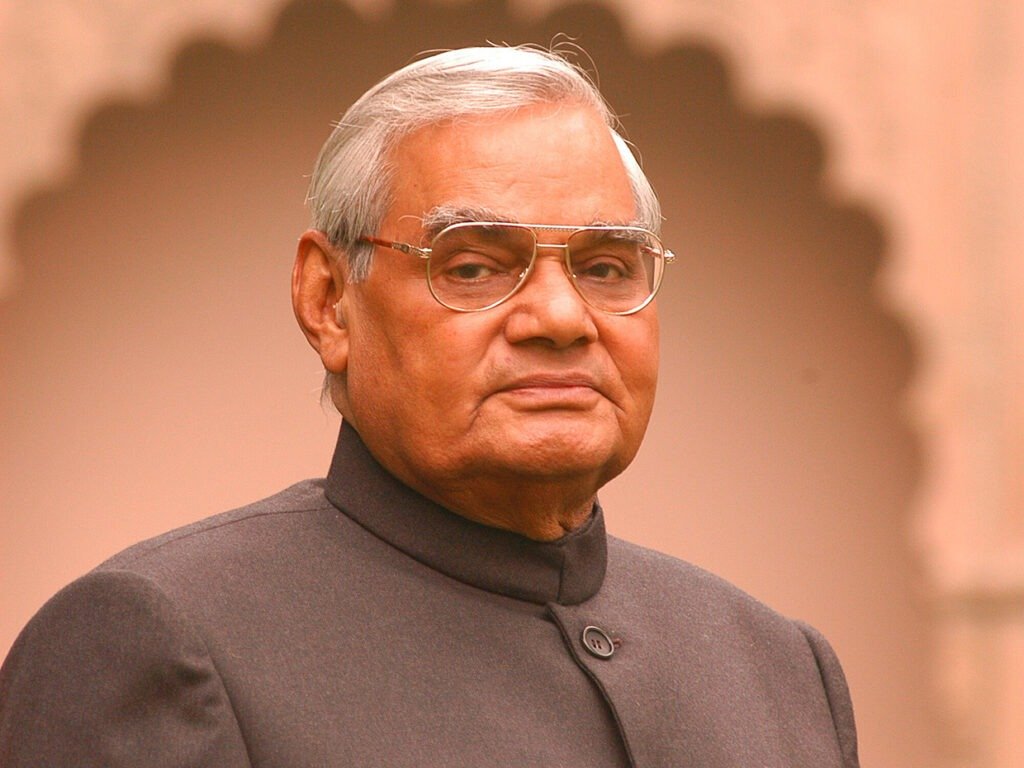10 Hindi Gazals Written by Faiz Ahmed Faiz
Faiz Ahmed Faiz, a renowned poet and writer, is known for his profound and thought-provoking gazals. His mastery of the Hindi language and his ability to evoke deep emotions through his words have made him one of the most celebrated poets of his time. In this article, we will explore ten of his most famous Hindi gazals, each showcasing his unique style and lyrical brilliance.
1. “Aur Bhi Gham Hain Zamane Mein” – This gazal beautifully captures the essence of human suffering and the trials and tribulations of life. Faiz’s poignant words paint a vivid picture of the pain and sorrow that exist in the world, reminding us of the fragility of our existence.
2. “Raat Yun Dil Mein Teri” – In this gazal, Faiz delves into the depths of love and longing. His words convey the intense emotions experienced when separated from a loved one, creating a sense of yearning and desire that resonates with readers.
3. “Dil Se Jo Baat Nikalti Hai” – This gazal explores the power of words and their ability to express the deepest emotions of the heart. Faiz’s poetic genius shines through as he beautifully weaves together words to create a tapestry of emotions that leave a lasting impact on the reader.
4. “Rang Hai Dil Ka Mera” – Faiz’s gazal “Rang Hai Dil Ka Mera” is a celebration of love and the joy it brings to one’s life. Through vibrant imagery and heartfelt verses, he paints a picture of love as a source of inspiration and happiness, reminding us of its transformative power.
5. “Dil-e-Nadaan Tujhe Hua Kya Hai” – In this gazal, Faiz explores the complexities of love and the pain that often accompanies it. His words beautifully capture the bittersweet nature of love, highlighting the vulnerability and longing that come with it.
6. “Aaj Bazaar Mein Pa-Bajola Chalo” – This gazal is a powerful commentary on societal norms and the need for change. Faiz’s words challenge the status quo and urge readers to question the injustices that exist in the world, making it a timeless piece that resonates with readers even today.
7. “Gulon Mein Rang Bhare” – One of Faiz’s most famous gazals, “Gulon Mein Rang Bhare” is a poetic masterpiece that captures the essence of love and loss. His words evoke a sense of melancholy and longing, painting a vivid picture of a heartbroken soul searching for solace.
8. “Yahan Se Sheher Ko Dekho” – In this gazal, Faiz reflects on the changing landscape of the city and the loss of innocence that comes with progress. His words paint a vivid picture of urbanization and its impact on society, urging readers to pause and reflect on the cost of progress.
9. “Mujhse Pehli Si Mohabbat” – This gazal is a heartfelt reflection on lost love and the pain of reminiscing about past relationships. Faiz’s words beautifully capture the nostalgia and longing that accompany memories of a love that once was, making it a deeply relatable piece for readers.
10. “Duniya Ne Teri Yaad Se Begana Kar Diya” – In this gazal, Faiz explores the theme of betrayal and the pain of being forgotten by someone once cherished. His words convey a sense of abandonment and heartache, resonating with readers who have experienced the sting of betrayal.
These ten Hindi gazals written by Faiz Ahmed Faiz showcase his mastery of the language and his ability to evoke deep emotions through his words. Each gazal is a testament to his poetic brilliance and serves as a reminder of the enduring power of his work. Whether exploring themes of love, loss, or societal injustices, Faiz’s gazals continue to captivate readers and leave a lasting impact on their hearts and minds.
Faiz Ahmed Faiz, a renowned Pakistani poet, is known for his profound and evocative poetry. His gazal, “Gulon Mein Rang Bhare,” is a masterpiece that continues to resonate with listeners even after all these years. The gazal, released in 1952, showcases Faiz’s ability to express complex emotions in a simple yet profound manner.
“Gulon Mein Rang Bhare” is a gazal that delves deep into the theme of love and longing. The lyrics, penned by Faiz, are filled with vivid imagery and metaphors that paint a picture of a heart brimming with emotions. The gazal’s title itself, which translates to “Colors Fill the Flowers,” sets the tone for the emotional journey that lies within the verses.
The melody that accompanies the lyrics adds another layer of depth to the gazal. The hauntingly beautiful tune, composed by Mehdi Hassan, perfectly complements the words, enhancing the emotional impact of the poetry. The combination of Faiz’s heartfelt lyrics and Hassan’s soulful rendition has made “Gulon Mein Rang Bhare” an unforgettable piece of art.
Over the years, “Gulon Mein Rang Bhare” has become an iconic gazal, cherished by fans of Urdu poetry and music alike. Its universal themes of love, longing, and the human experience have transcended time and cultural boundaries. The gazal has been covered by numerous artists, each adding their unique interpretation to its timeless beauty.
What makes “Gulon Mein Rang Bhare” even more special is its ability to evoke a range of emotions in the listener. Whether it is a feeling of nostalgia, a sense of yearning, or the bittersweet taste of unrequited love, the gazal has the power to touch the deepest corners of the heart.
The enduring popularity of “Gulon Mein Rang Bhare” is a testament to the timeless appeal of Faiz Ahmed Faiz’s poetry. His ability to capture the essence of human emotions and express them in a way that resonates with people from all walks of life is what makes him one of the most revered poets of his time.
As we listen to “Gulon Mein Rang Bhare” today, we are reminded of the power of art to transcend barriers and connect us on a deeper level. It serves as a reminder that love and longing are universal experiences that bind us together, regardless of our differences.
Written during a time of political unrest and social inequality, “Aaj Bazaar Mein Pa-Ba Jaulan Chalo” captures the essence of Faiz’s poetic genius. The title itself, when translated, means “Let us go to the market today, my fellow travelers.” This seemingly simple phrase holds a deeper meaning, symbolizing the journey of life and the collective struggle of the masses.
In this gazal, Faiz explores the stark contrast between the opulence of the market and the poverty-stricken lives of the common people. He vividly describes the bustling marketplace, with its vibrant colors and intoxicating fragrances. However, beneath this facade of prosperity lies the harsh reality of poverty and injustice.
With his poignant verses, Faiz sheds light on the plight of the marginalized and downtrodden. He paints a vivid picture of their struggles, depicting the pain and suffering they endure on a daily basis. Through his words, he calls for unity and solidarity among the oppressed, urging them to rise up against the oppressive forces that keep them enslaved.
What sets this gazal apart is Faiz’s ability to seamlessly blend social commentary with profound philosophical reflections. He delves deep into the human condition, exploring themes of love, loss, and resilience. Each line is carefully crafted, carrying layers of meaning that resonate with readers even today.
Faiz’s mastery of language and his ability to evoke emotions through his words make “Aaj Bazaar Mein Pa-Ba Jaulan Chalo” a timeless piece of literature. It serves as a reminder of the power of poetry to bring about social change and inspire generations to fight for justice and equality.
Written by the renowned poet Faiz Ahmed Faiz, “Raat Yun Dil Mein Teri” is a timeless masterpiece that has stood the test of time. The gazal, which translates to “The Night, Like You, in My Heart,” is a poetic expression of longing and desire. Faiz’s use of vivid imagery and metaphors creates a mesmerizing atmosphere that transports the listener into a world of intense emotions.
The song begins with a haunting melody that sets the mood for the introspective lyrics to follow. As the music unfolds, the listener is drawn into a world of melancholy and yearning. The words flow seamlessly, painting a picture of a night filled with longing and the presence of a beloved in the depths of the heart.
One of the striking aspects of “Raat Yun Dil Mein Teri” is Faiz’s ability to capture the beauty of the night. Through his carefully chosen words, he describes the moonlit sky, the gentle breeze, and the silence of the night, all of which serve as a backdrop to the protagonist’s longing for their beloved.
Furthermore, the gazal delves into the complexities of love and desire. Faiz’s lyrics explore the depths of the human heart, delving into the pain and yearning that come with unrequited love. The emotions expressed in “Raat Yun Dil Mein Teri” resonate with listeners of all ages and backgrounds, as they tap into the universal experience of longing for someone who is out of reach.
Since its release in 1961, “Raat Yun Dil Mein Teri” has become an iconic gazal that continues to captivate audiences. It has been covered by numerous artists over the years, each bringing their unique interpretation to the timeless lyrics. The enduring popularity of this gazal is a testament to Faiz’s mastery as a poet and his ability to touch the hearts of listeners.
In conclusion, “Raat Yun Dil Mein Teri” is a gazal that exemplifies Faiz Ahmed Faiz’s artistry and poetic brilliance. Its evocative lyrics, combined with a haunting melody, create a profound emotional impact on the listener. This timeless masterpiece continues to be cherished by gazal enthusiasts, serving as a reminder of the power of poetry to capture the essence of human emotions.
- “Dasht-e-Tanhai Mein”
Released: 1963
Written during Faiz’s imprisonment, “Dasht-e-Tanhai Mein” is a gazal that reflects the pain and isolation experienced by the poet. Released in 1963, this gazal remains a testament to Faiz’s resilience and his ability to find beauty even in the darkest of times.
In “Dasht-e-Tanhai Mein,” Faiz explores the theme of loneliness and the vast emptiness that one feels in the depths of solitude. The poem captures the essence of being alone, surrounded by nothing but the vast expanse of a desolate landscape. Faiz’s words paint a vivid picture of a barren desert, where the poet is left to wander aimlessly, searching for solace and connection.
The poem begins with Faiz describing the haunting silence of the desert, where not even the sound of footsteps can be heard. The poet’s words evoke a sense of desolation and abandonment, as he portrays himself as a lone figure in a vast, empty space. The vastness of the desert becomes a metaphor for the poet’s loneliness, emphasizing the depth of his isolation.
As the poem progresses, Faiz delves deeper into his emotions, expressing the pain and anguish that accompany his solitude. He describes the ache in his heart and the longing for companionship, as he yearns for someone to share his pain and understand his struggles.
Despite the overwhelming sense of loneliness portrayed in “Dasht-e-Tanhai Mein,” there is a glimmer of hope that shines through Faiz’s words. The poet finds solace in the beauty of nature, as he marvels at the stars that illuminate the night sky and the flowers that bloom in the desert. These small moments of beauty serve as a reminder that even in the darkest of times, there is still light and beauty to be found.
Through his powerful imagery and poignant words, Faiz captures the essence of human emotions and the resilience of the human spirit. “Dasht-e-Tanhai Mein” is not just a poem about loneliness; it is a testament to the strength of the human soul and the ability to find beauty and hope even in the most desolate of circumstances.
Written by the legendary poet Faiz Ahmed Faiz, “Mujhse Pehli Si Mohabbat” is a masterpiece that resonates with people of all generations. The gazal delves deep into the emotions and experiences of first love, evoking a sense of nostalgia and longing. Its profound lyrics paint a vivid picture of the intensity and purity of that initial connection, making it relatable to anyone who has ever experienced the magic of falling in love for the first time.
The melody of “Mujhse Pehli Si Mohabbat” is equally enchanting, with its hauntingly beautiful composition that perfectly complements the heartfelt words. The combination of Faiz’s soulful poetry and the mesmerizing music creates an ethereal atmosphere, transporting listeners to a world where emotions flow freely and memories come alive.
Since its release in 1971, this gazal has become an integral part of the cultural fabric of South Asia. It has been performed and recorded by numerous renowned artists, each adding their unique touch to the timeless composition. From the soulful rendition by Mehdi Hassan to the mesmerizing interpretation by Abida Parveen, “Mujhse Pehli Si Mohabbat” has been embraced by musicians and audiences alike, solidifying its status as a classic.
But what makes this gazal truly special is its ability to transcend time and language barriers. Its universal theme of love and longing strikes a chord with people from all walks of life, regardless of their cultural or linguistic background. The emotions captured in “Mujhse Pehli Si Mohabbat” are timeless and relatable, reminding us of the power of love to transcend boundaries and connect us all.
As we listen to this immortal gazal, we are transported to a world where love knows no bounds and where the beauty of first love remains eternally alive. “Mujhse Pehli Si Mohabbat” continues to captivate hearts and minds, reminding us of the profound impact that love can have on our lives.
“Yeh Dagh Dagh Ujala” is a masterpiece that showcases Faiz’s unparalleled ability to capture the essence of human emotions through his poetic expressions. This gazal, released in 1978, holds a special place in the hearts of Faiz’s admirers, as it resonates with the universal experiences of pain, suffering, and the longing for a better tomorrow.
Through the poignant verses of “Yeh Dagh Dagh Ujala,” Faiz delves deep into the human condition, shedding light on the struggles faced by individuals in their daily lives. The gazal serves as a poignant reminder of the injustices and hardships that plague our society, while also instilling a sense of hope and resilience in the face of adversity.
Faiz’s empathetic approach towards the struggles of humanity is evident in every line of this gazal. His words have the power to evoke profound emotions, making the listener reflect on their own experiences and empathize with the pain of others. The gazal becomes a vessel through which Faiz communicates his unwavering belief in the power of love, compassion, and the indomitable spirit of the human race.
As the verses of “Yeh Dagh Dagh Ujala” flow, they paint a vivid picture of the world we live in – a world marred by darkness, but one that still holds the promise of a brighter future. Faiz’s words act as a guiding light, urging individuals to rise above their circumstances and strive for a better tomorrow.
The timeless beauty of “Yeh Dagh Dagh Ujala” lies in its ability to transcend time and space. Despite being released over four decades ago, the gazal’s themes and messages remain as relevant today as they were then. It serves as a reminder that the struggles faced by humanity are not confined to a particular era or region, but are universal in nature.
Through his poetic genius, Faiz has created a gazal that not only captivates the listener with its melodic composition but also touches the depths of their soul. “Yeh Dagh Dagh Ujala” is a testament to Faiz’s unwavering commitment to the pursuit of justice, equality, and the betterment of society as a whole.
With its haunting melody and poignant lyrics, “Rabba Sacheya” transports listeners to a realm of introspection and contemplation. Faiz’s soulful voice captures the essence of his spiritual journey, as he delves into the depths of his existence and seeks solace in the divine.
The gazal begins with a gentle acoustic guitar strumming, setting a tranquil ambiance that complements Faiz’s heartfelt vocals. As the song progresses, the instrumentation gradually builds, incorporating layers of harmonium and tabla, creating a mesmerizing fusion of traditional and contemporary sounds.
The lyrics of “Rabba Sacheya” are deeply profound, touching upon themes of love, faith, and the eternal quest for truth. Faiz’s poetic prowess shines through as he weaves together metaphors and imagery, painting a vivid picture of his spiritual awakening.
Throughout the gazal, Faiz’s yearning for a higher power becomes palpable, as he implores the divine to reveal itself and guide him on his path. His words resonate with listeners, evoking a sense of longing and a desire to connect with something greater than ourselves.
As the song reaches its climax, the music swells, enveloping the listener in a wave of emotion. Faiz’s voice soars, carrying the weight of his spiritual journey and leaving an indelible impression on the listener’s soul.
“Rabba Sacheya” is more than just a song; it is a spiritual experience. Its timeless appeal lies in its ability to transcend cultural and linguistic barriers, touching the hearts of people from all walks of life. Whether one understands the language or not, the raw emotion conveyed in Faiz’s voice and the universal themes explored in the gazal resonate with the human experience.
Released in 1984, “Rabba Sacheya” continues to captivate audiences to this day. Its enduring popularity is a testament to the power of music as a conduit for spiritual exploration and self-discovery.
The song “Aur Ahista Kijiye Baatein” is a timeless masterpiece that showcases the talent and artistry of its creators. The lyrics, penned by the legendary poet Javed Akhtar, delve into the depths of human emotions, capturing the essence of love, longing, and the intricacies of relationships. The words are carefully chosen and beautifully woven together, creating a tapestry of emotions that resonate with listeners on a profound level.
The melody of “Aur Ahista Kijiye Baatein” is equally captivating. Composed by the renowned music director Jagjit Singh, the song features a hauntingly beautiful arrangement that perfectly complements the lyrics. The gentle strumming of the guitar, the soft notes of the piano, and the soulful vocals of Jagjit Singh himself create a mesmerizing atmosphere that transports the listener to a world of introspection and contemplation.
What sets “Aur Ahista Kijiye Baatein” apart from other gazals is its ability to evoke a range of emotions in the listener. The song begins with a sense of longing and melancholy, as the protagonist reflects on the complexities of his relationship. As the verses progress, however, there is a subtle shift in the mood, as the lyrics emphasize the importance of understanding and compassion in overcoming the challenges of love.
The song’s universal themes and relatable lyrics have made it a favorite among listeners of all ages. Whether one is experiencing the ups and downs of a romantic relationship or simply reflecting on the complexities of human connections, “Aur Ahista Kijiye Baatein” offers solace and a sense of understanding.
Over the years, “Aur Ahista Kijiye Baatein” has become an iconic gazal, earning its rightful place in the hearts of gazal enthusiasts worldwide. Its timeless appeal and enduring popularity are a testament to the power of music to transcend time and connect people across generations and cultures.
So, the next time you find yourself in need of a musical escape or a moment of introspection, let the soothing melody and profound lyrics of “Aur Ahista Kijiye Baatein” transport you to a world of emotions and contemplation.
Written by the legendary Urdu poet Faiz Ahmed Faiz, “Dil Se Teri Nigah Jigar Tak” is a timeless masterpiece that continues to captivate listeners with its profound lyrics and soul-stirring melody. The gazal, which translates to “From Heart to Soul,” explores the intricacies of love and the profound impact that a beloved’s gaze can have on one’s heart.
Released in 1990, this iconic gazal quickly gained popularity and became an instant hit among gazal enthusiasts. The hauntingly beautiful composition, coupled with Faiz Ahmed Faiz’s poignant lyrics, struck a chord with listeners, resonating with their own experiences of love, longing, and desire.
As one delves into the verses of “Dil Se Teri Nigah Jigar Tak,” they are transported into a world where emotions run deep and love becomes an all-encompassing force. Faiz Ahmed Faiz’s mastery over words is evident in every line, as he weaves together imagery and metaphors that paint a vivid picture of love’s complexities.
The gazal explores the power of a beloved’s gaze, symbolizing the connection between two souls. It delves into the intensity of that gaze, which has the ability to penetrate one’s very being and leave an indelible mark on the heart. Through his words, Faiz Ahmed Faiz captures the vulnerability and longing that one experiences when they are under the spell of love.
Accompanied by a mesmerizing melody, “Dil Se Teri Nigah Jigar Tak” takes listeners on an emotional journey, evoking a myriad of feelings ranging from joy and ecstasy to heartache and longing. The composition beautifully complements the depth of the lyrics, creating a harmonious blend of music and poetry.
Over the years, “Dil Se Teri Nigah Jigar Tak” has become a beloved classic, cherished by gazal enthusiasts and lovers of Urdu poetry alike. Its timeless appeal lies in its ability to resonate with audiences across generations, as it speaks to the universal emotions of love, longing, and the power of a beloved’s gaze.
Today, this gazal continues to be performed and appreciated by artists and fans worldwide, keeping the legacy of Faiz Ahmed Faiz alive. Its enduring popularity is a testament to the profound impact that his poetry has had on the world of Urdu literature and music.
Written during the oppressive regime in Pakistan, “Hum Dekhenge” is a gazal that became an anthem of resistance. Released in 1995, this gazal embodies Faiz’s unwavering belief in the power of the people and their ability to bring about change.
Faiz Ahmed Faiz, a renowned Pakistani poet, wrote “Hum Dekhenge” during a time of political turmoil and repression in Pakistan. The song’s lyrics reflect the frustrations and aspirations of the people who were yearning for freedom and justice. Faiz’s words resonated deeply with the masses, as they captured the essence of their struggle and gave voice to their collective desire for a better future.
The song’s popularity grew rapidly, spreading like wildfire across the country. It became an anthem of hope and defiance, symbolizing the resilience and determination of the Pakistani people. The powerful lyrics, combined with the soul-stirring melody, struck a chord with listeners, inspiring them to stand up against oppression and fight for their rights.
“Hum Dekhenge” is not just a song; it is a testament to the power of art in times of adversity. It served as a rallying cry for the oppressed, instilling in them a sense of unity and strength. The song’s message of hope and liberation resonated far beyond the borders of Pakistan, reaching people across the globe who were fighting against injustice in their own societies.
The impact of “Hum Dekhenge” extended beyond its initial release in 1995. It continues to be performed and celebrated today, serving as a reminder of the power of resistance and the enduring spirit of the human struggle for freedom. The song has been covered by numerous artists, both in Pakistan and internationally, further cementing its place as a timeless anthem of resistance.
In conclusion, “Hum Dekhenge” is a gazal that holds immense significance in the history of Pakistani music and politics. Its lyrics capture the spirit of a nation fighting for its rights, and its melody continues to inspire and uplift listeners to this day. Faiz Ahmed Faiz’s masterpiece stands as a testament to the enduring power of art and its ability to ignite change in even the darkest of times.







